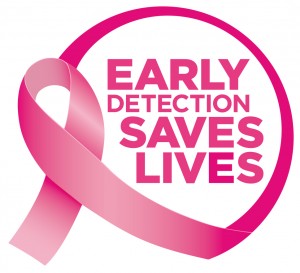Although many of us think of breast cancer as a single disease, the diagnosis is not limited to one type. Most breast cancers start as small tumors. Some stay put; others travel. How the tumor behaves and how it grows will dictate how it’s classified and your treatment options.
The Cancer Treatment Centers of America website broadly organizes breast cancers into two groups based on how the cancer behaves: noninvasive (in situ) breast cancer and invasive (infiltrating) breast cancer.
Noninvasive Breast Cancers
In noninvasive breast cancer, “cancerous cells remain in a particular location of the breast, without spreading to surrounding tissue, lobules or ducts,” the website reports. Noninvasive breast cancers are generally earlier stage cancers that respond well to treatment. Ductal Carcinoma In Situ, or DCIS, is the most common form of noninvasive breast cancer; the American Cancer Society reports that 60,000 cases of DCIS, or about 20 percent of all breast cancer cases, are diagnosed in the United States each year.
DCIS begins inside the milk ducts – ‘in situ’ means that it stays within the duct and is considered noninvasive because it hasn’t spread to other surrounding tissues. Dr. Harold Burstein, institute physician at Dana-Farber Cancer Institute in Boston and associate professor of medicine at Harvard Medical School says it’s a “precancerous lesion, often diagnosed in women who’ve had mammograms, and it’s sort of a precursor to breast cancer.” Similar to a colon polyp. “It’s a benign growth, but you remove it to remove the growth” and prevent the development of invasive cancer.
Even with surgery to remove the growth, patients with SCIS are at higher risk of reoccurrence and later development of invasive cancer, but breastcancer.org reports the rate of reoccurrence is less than 30 percent.
Invasive Breast Cancers
In invasive breast cancers “cancerous cells break through normal breast tissues barriers and spread to other parts of the body through the bloodstream and lymph nodes,” reports Breastcancer.org. According to the American Cancer Society, invasive ductal carcinoma, or IDC, is the most common form of breast cancer – about 80 percent of cancer diagnoses are ISC and about 180,000 new cases are diagnosed each year in the U.S.
As with DCIS, IDC also begins inside the milk ducts, but these growths have moved beyond those boundaries and have begun invading or infiltrating the tissues around the ducts. Unlike noninvasive lesions, these growths are cancerous tumors, and treatment will likely be more aggressive than with a SCIS diagnosis. If left untreated, IDC usually spreads to the lymph nodes and then onwards to other parts of the body.
Get your yearly 3d mammogram and breast cancer screening at CBCC! Early detection is the best way to fight breast cancer. Call 800-371-0002 to schedule your appointment. The Center for Diagnostic Imaging in Miami also offers advanced MRIs, CT Scans, and more.








